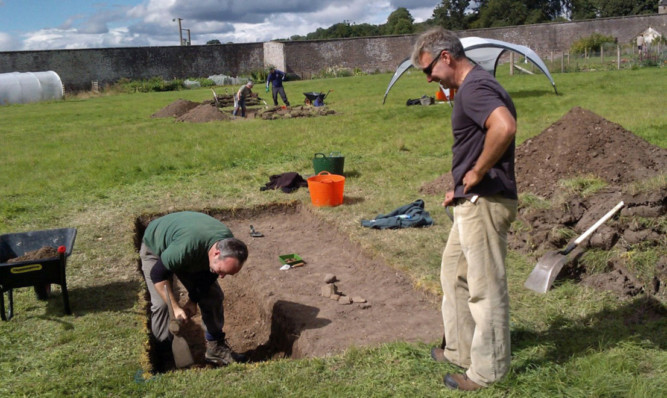A fact-finding archaeological dig at an Angus tourist attraction has revealed historic artefacts dating back 700 years.
The landmark discovery was made at Montrose’s House of Dun, which has unearthed several examples of pottery dating back to the 14th Century. The find suggests the site may have been lived on more than 100 years prior to what was originally thought.
The Georgian building overlooks Montrose Basin and was designed and built by William Adam in 1730 for Lord Dun, David Erskine.
Previous examinations of the grounds have shown signs of historic habitation on the grounds dating beyond the construction of the castle which once stood there.
However, the discoveries made by Dr Daniel Rhodes, National Trust for Scotland archaeologist and his team of volunteers from the Trail Blazer group in Edinburgh, have added another dimension to the history of the area.
House of Dun manager John McKenna said: “The house was built in 1730 but there is evidence of previous habitations in the whole area going back another 500 years.
“We traced back the history of the building and found three properties built prior to the house. There was a round tower at the back of the site and we also have an archway in ruins.
“However, a geophysical search of the area showed up a few anomalies which were worthy of investigating. We found the footprint of the original castle dating back to the 13th Century.
“The further down we dug the more evidence we uncovered. We found pieces of pottery from the early 14th century so we are on the right lines.
“We can see the original 14th and 15th century plough marks and we can tell the area has been a site for cultivation for quite a few centuries. However, what we didn’t find was the original boundary of the original castle.”
Because the dig failed to discover the castle boundaries it means the arch in the garden may have been moved there from another area.
John added: “Certainly, in Daniel’s early view, he has a challenge to identify that arch which sits in the walled garden and to see if it is in its original place.
“We trailed a part in line with it but we didn’t find the foundations. It may be that the archway has been placed there as a form of folly.
“This really exciting for the house because we are standing on centuries of history layered on top of each other it’s incredible.”
